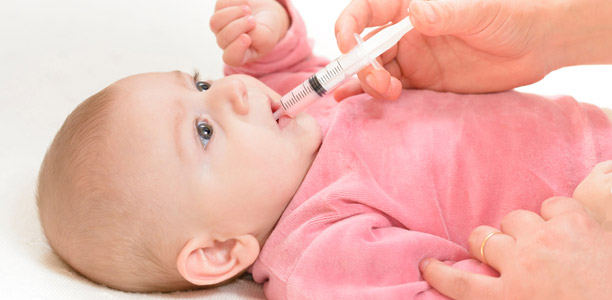A new study has found that half of Australian infants are treated with antibiotics during their first year of life – one of the highest rates in the world.
In a time of rising antimicrobial resistance and growing evidence of the negative impact antibiotics have on beneficial bacteria, the high rate of antibiotic prescription for Australian children is cause for concern, according new research.
Recent data from the Barwon Infant Study, a collaborative birth cohort study between Deakin University, Barwon Health and the Murdoch Children’s Research Institute (MCRI), revealed Australia’s antibiotic prescription rate for babies under 12 months old is almost 150% higher than the UK and almost 500% higher than Switzerland.
Fifty per cent of babies in the study had at least one antibiotic prescription in their first twelve months while one in eight received three or more antibiotic prescriptions. Children with siblings were more likely to be prescribed antibiotics, possibly due to the sharing of germs.
“Australian babies in this large study were exposed to considerably more antibiotics than the majority of their international counterparts,” said lead author Professor David Burgner, MCRI Group Leader Infection and Immunity.
“A significant proportion of antibiotics appear to be prescribed for viral infections, which do not respond to antibiotics.
“On average, babies suffer around eight viral illnesses per year, so they are really very common, particularly over winter,” he added.
The study, published in The Journal of Paediatrics and Child Health last month, is one of only a few to examine antibiotic exposure in Australian babies and to combine GP and hospital antibiotic prescribing data.
The researchers are now investigating whether exposure to antibiotics has affected the children’s gut bacteria and other health outcomes such as allergies, asthma, eczema and obesity.
Professor of Paediatrics at Deakin and co-lead investigator of the Barwon Infant Study Peter Vuillermin said the study’s findings were a “call to arms” to develop ways to reduce antibiotic exposure in babies.
“The data are really important because they arise in a context where serious bacterial illnesses still occur but are much less common in a well-nourished, highly-vaccinated population,” he said.
“At the same time, we’re seeing increasing problems with antibiotic resistance among bacteria in the population and we’re also finding more and more evidence that antibiotics influence the healthy bacteria in the body.
“These changes in the composition and metabolic activity of our healthy bacteria are associated with chronic health problems so we really need to think about how we reduce antibiotic use in infants.”
However, he emphasised the study’s results should not be used to point the blame at GPs, or worried parents.
“When you look at the results, the highest rate of antibiotic exposure is actually in the first month of life. That’s when hospital paediatricians, like myself, are starting intravenous antibiotics to reduce the possibility of serious bacterial infection in very young babies when we think that the risk of developing such an infection is unacceptably high,” he said.
“While we do it for good reasons, it’s also important to recognise that infections in full-term infants have become very rare.
“We have a number of studies published and underway looking at strategies to take a more refined approach to prescribing antibiotics. Can we reduce the number of babies that we give them to? Can we treat for a shorter duration of time?”
Professor Vuillermin said more than half the antibiotics prescribed to infants in general practice were for respiratory tract infections, despite the great majority of such infections being viral.
“That doesn’t mean there isn’t the risk of a serious bacterial infection like pneumonia, but that risk is very low.
“What we need to think about is how paediatricians, GPs and parents can work together to make good decisions about safely withholding antibiotics in ways people feel comfortable with, but which allow us to substantially reduce unnecessary use of antibiotics,” he said.
Such strategies might involve “watchful waiting,” to see if more serious symptoms develop instead of pre-emptively prescribing antibiotics and educating parents about the signs and symptoms of bacterial illness.
“Often the best thing to take home from a GP is advice rather than a prescription,” Professor Vuillermin said.
“The late Peter Hewson, a superb Geelong paediatrician, produced excellent evidence regarding the signs of potentially serious illness in infants, which have since been adopted by the World Health Organisation.
“We need to be using Hewson’s assessment tool to increase the proportion of babies in which we adopt a strategy of watchful waiting.
“If we apply this approach, we can safely and substantially reduce unnecessary exposure to antibiotics among our babies, but we all need to work together on this.”
Professor Vuillermin explained that Hewson’s criteria can be summarised as “ABC, fluids in, fluid out.”
A: Is the baby having periods of alertness, as compared to being persistently drowsy?
B: Is the baby’s breathing normal?
C: Is the baby’s colour normal? Babies who are pale, and in particular pale and feverish, are at increased risk of a serious bacterial illness.
Fluids in: Has the baby drunk more than 50% of what he or she normally would over the past 24 hours?
Fluids out: Has the baby had more than four wet nappies in the past 24 hours?
“Beyond the first month of life, if the answer to all these questions is ‘yes’ then the risk of serious bacterial illness is low and it is USUALLY sensible to watch and wait,” Professor Vuillermin said.
“The parents and GP should arrange a review for the following day, and, in the meantime, parents should apply ‘ABC, fluids-in, fluids-out’ to recognise signs that their baby may becoming more unwell.
“Unwell babies less than a month old should generally be discussed with a paediatrician.”
(Source: Deakin University, The Journal of Paediatrics and Child Health)










